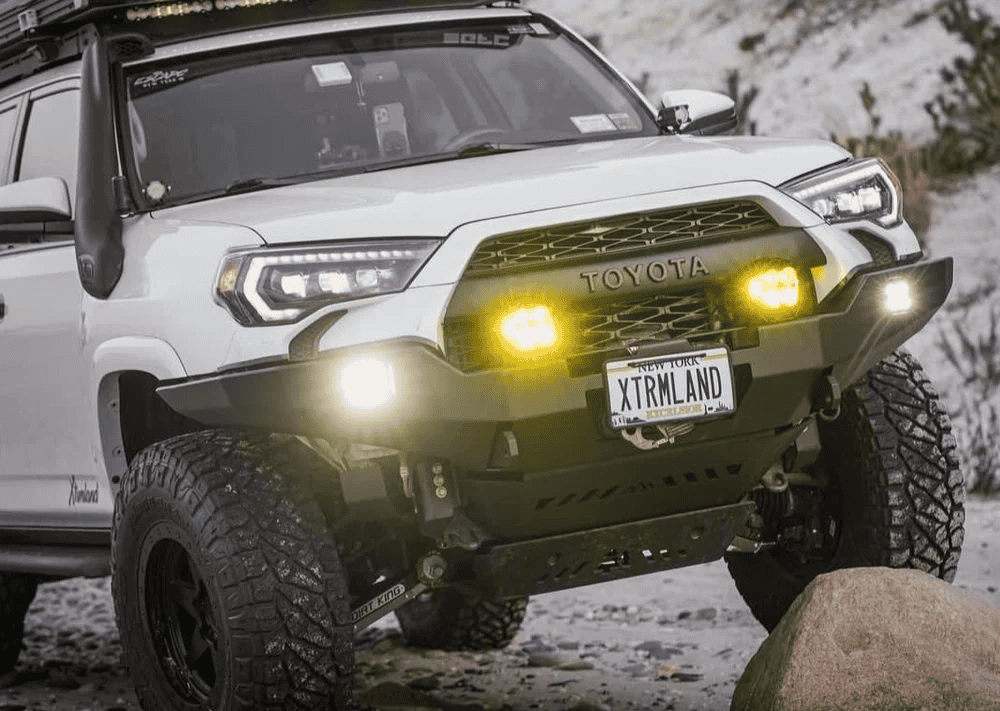Overland Vehicles

The Land Cruiser has long been Toyota’s global flagship for remote travel. It favors durability, high payload, and highway comfort that carries into rough trail approaches. Generations like the 80, 100, and 200 series pair stout frames with full time four wheel drive and low range, which keeps traction predictable on variable surfaces. The tradeoff is size and weight, which influence tire choice, braking, and fuel strategy.
The 4Runner plays a different card. It is smaller, lighter, and easier to maneuver on tight forest roads and rocky switchbacks. Most models use part time four wheel drive with low range and traction aids like A TRAC, crawl control, and available rear differential locks on select trims. Because the 4Runner weighs less, it often feels more nimble on technical lines and is kinder to components when fully loaded for a long trip.
For solo travelers or two person crews with a dog and minimal gear, a 4Runner’s cargo area and roof load potential can be plenty with smart packing. Families, moto haulers, or travelers carrying water, fuel, recovery kits, and a full camp kitchen often appreciate the Land Cruiser’s higher payload ceiling and cabin volume. If you expect long highway transits with headwinds, the Land Cruiser’s wheelbase and power reserves reduce fatigue.
Older Land Cruisers commonly run inline six or V8 power with torque biased delivery, ideal for crawling and towing. Many trims include full time four wheel drive with a center differential lock, which creates a planted feel on mixed traction like snow over gravel. The 4Runner’s long running V6 has a reputation for simplicity and longevity, and its part time system lets you run in two wheel drive on dry pavement for slightly better economy.
Gearing matters for hills and load. Deep low range ratios in both platforms help, but the Land Cruiser’s torque helps carry mass at lower rpm. The 4Runner’s lighter curb weight means less mass to control, which can compensate for lower torque on steep climbs when geared correctly.
Payload is a quiet decision maker in overlanding. Roof tents, steel bumpers, armor, water, fuel, and food add up quickly. The Land Cruiser typically allows more weight onboard before you encroach on limits, and its brakes, axles, and cooling systems are sized for it. The 4Runner can absolutely tour remote routes, but careful gear discipline pays off. Keep heavy items low and centered, and think in terms of essential systems rather than novelty gear.
Both platforms benefit from quality suspension tuned for added weight. The Land Cruiser’s longer wheelbase smooths washboards and ruts and handles a loaded rear cargo area with less sag when properly sprung. The 4Runner responds well to matched spring and shock packages that account for armor and cargo. Articulation numbers only tell part of the story. Damping quality and heat control matter more on multi hour corrugated roads.
Approach, breakover, and departure angles influence confidence when cresting rock shelves or exiting deep ruts. The 4Runner’s shorter wheelbase helps with breakover and tight hairpins. The Land Cruiser’s approach and departure can be improved with high clearance armor and the right tire diameter, which also lifts diffs away from obstacles. Either platform becomes more capable with tire sizing that matches gearing and power.
A balanced tire choice brings traction without overwhelming the drivetrain. Many 4Runner owners find a sweet spot in the 33 inch range for mixed use. Land Cruisers can support larger diameters more gracefully once gearing and suspension are set up. Sidewall strength is critical. Look for light truck construction with puncture resistant belts for sharp shale and hidden stumps.
Fuel economy is rarely a decisive win for either, but the 4Runner often sips a bit less thanks to weight. The Land Cruiser offsets thirst with stability at speed and towing confidence if you haul a moto or small trailered camp. Remote routes reward auxiliary fuel, efficient cooking, and smart route timing. Regardless of platform, plan range by terrain and wind rather than a simple highway average.
Both platforms earn respect for reliability when maintained. The Land Cruiser’s components are heavy duty and often last longer under sustained load, but parts can be pricier. The 4Runner’s parts availability and vast community knowledge make trail fixes and planning simpler. Electronics like crawl control and KDSS bring benefits yet deserve periodic inspection before a long trip.
If your travel style favors long transits with full camp systems, a Land Cruiser sets a calm, capable foundation. If you prefer tight trails, quick setups, and lighter packing, a 4Runner feels agile and fun while still ready for real miles. Either way, a thoughtful build sequence matters. Start with tires and suspension, add protection where you actually make contact, then finish with power management and organized storage.
When you are ready to map a purpose built setup, explore overland rigs to see how a cohesive plan transforms the same platform. For tailored gear, systems, and fabrication, review our custom overland upfit approach to get a clean, serviceable layout. Curious about our process and handoff experience, including trip ready walkthroughs, visit why choose OZK Customs.
Tell us where you want to go and what you need to carry. We will design a reliable, quiet, and organized overland system that suits your Land Cruiser or 4Runner and the way you actually travel. We build complete custom rigs and partial upfits with suspension tuning, protection, racks, power, lighting, and integrated storage that make long days easy.
Looking for inspiration while you plan your platform and build path, start at our home and dive into the resources above.
Bring your platform and your route plan. Our team will map payload, power, storage, and protection into a cohesive build that feels dialed the first time. Tell us how you travel, and we will blueprint the right overland upfit to match your terrain and timeline. Submit the form to start your OZK spec session.
ADDRESS:
6159 E Huntsville Rd, Fayetteville, AR 72701
PHONE:
(479) 326-9200
EMAIL:
info@ozkvans.com